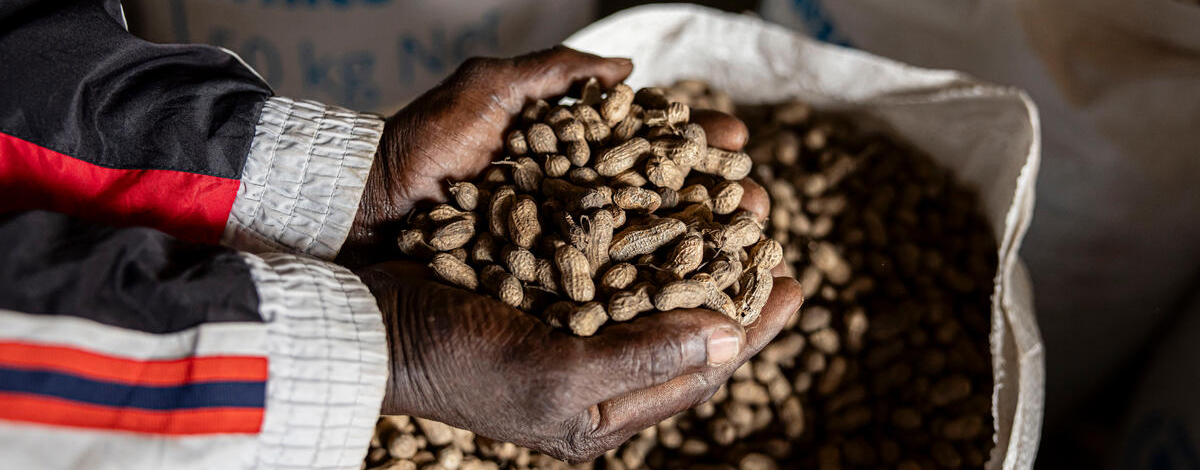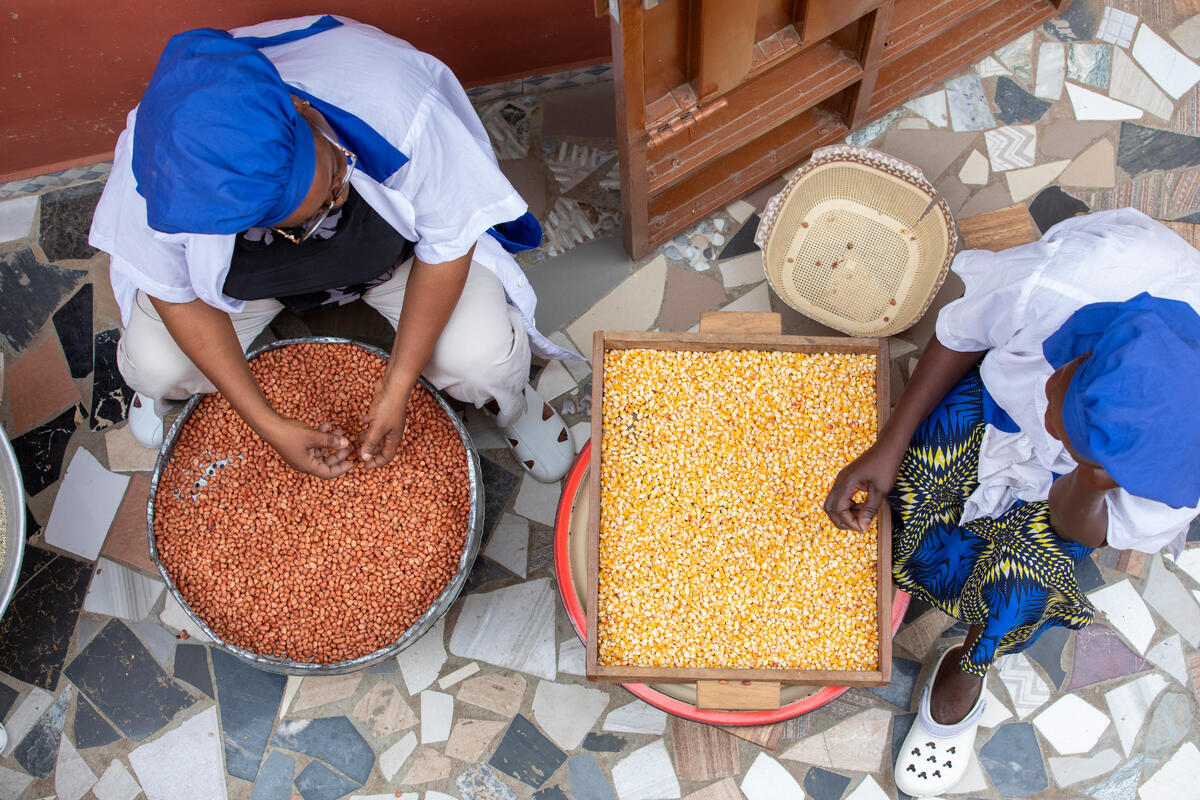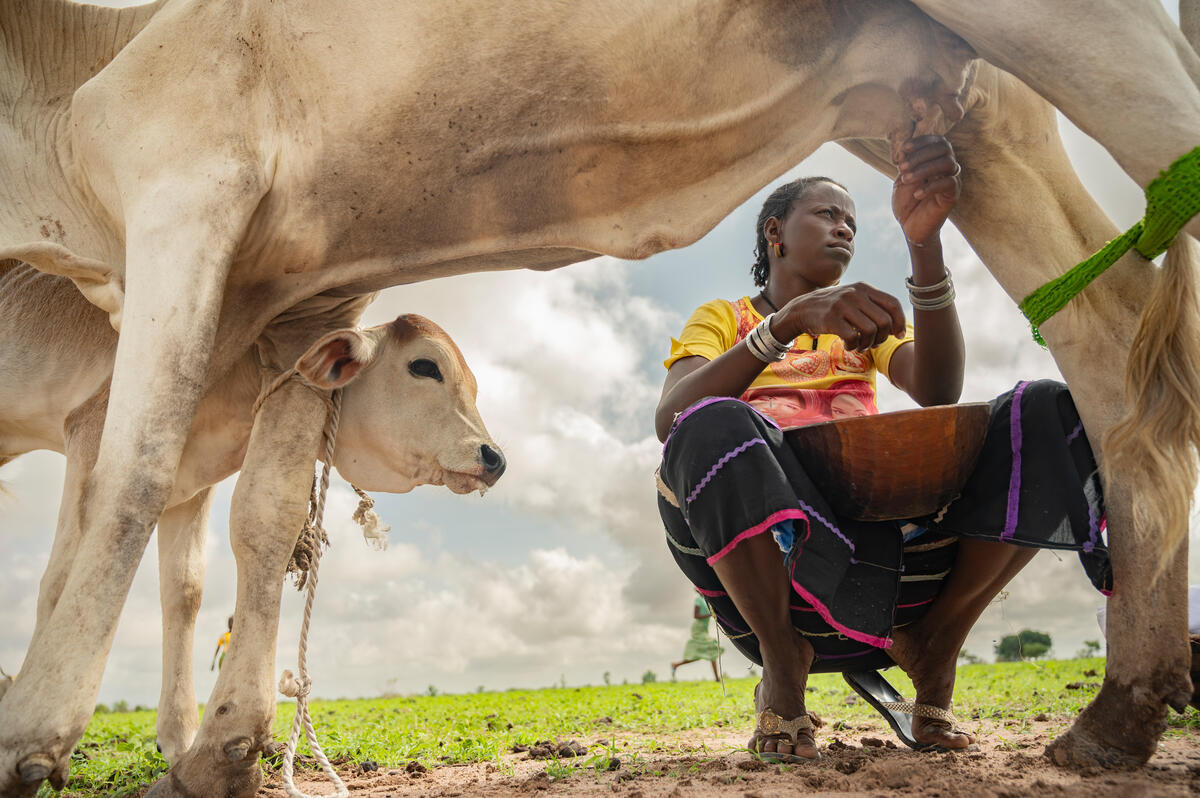
Mycotoxins: A silent risk to plants, people and animals
In agrifood systems, there are threats to human, animal and plant health that can develop at any point along the food chain. Among these are mycotoxins – toxic chemicals produced by fungi that develop quietly but that can have a big impact on livelihoods and can disrupt trade.
The risk starts in the field. But so can the solution - through healthy crops, strong plant protection and good agricultural practices.
What are mycotoxins?
Mycotoxins are naturally produced by certain fungi, including Aspergillus, Fusarium and Penicillium, with several hundred different types identified to date. These fungi thrive mostly in warm, humid environments and can infect many crops like maize, wheat, sorghum, groundnuts, spices, dried fruits and tree nuts.
Once a crop is infected, the fungi can produce mycotoxins in the field, during harvest and transportation, or in storage. These toxins can survive many common food processing steps such as milling, baking, boiling, roasting or juicing - meaning they often remain in the final products.
Contamination can occur at any point in the food chain. People may consume contaminated cereals, nuts, juices or foods. As these commodities move through local and international supply chains, the threat extends far beyond the field.
What makes them dangerous?
Mycotoxins represent a threat to plant health, as they develop in plant products, to animal health, when they contaminate animal feed, and to human health when humans eat infected plant- or animal-source foods. They are a threat to both food safety and food security.
When animals consume contaminated feed, they may experience reduced growth, reproductive problems, or suppressed immune function. In humans, even at very low levels, exposure to some mycotoxins has been linked to fertility issues, weakened immunity, stunted growth in children, and even cancer.
Aflatoxins are among the most potent natural carcinogens and commonly appear in maize and nuts. In livestock, aflatoxin B1 is of particular concern as it can metabolize into aflatoxin M1, which passes into milk, meaning this poses a food safety risk, especially for infants and young children who consume milk as a staple. Similarly, ergot poisoning, also known as ergotism, is a long and well-known health concern. The causal fungus (Claviceps spp.) replaces cereal grains with hard, dark sclerotia that contain alkaloids (e.g. ergotamine, ergocristine, ergocornine). In animals and humans, these compounds trigger vasoconstriction, gastrointestinal distress and neurological issues, while severe cases can progress to gangrene or death. Although in current times its impact in food chains is limited, it is still an important issue in the livestock sector in places where disease control is constrained both in plant and animal health.


From healthy plants to safer food
The fungi that produce mycotoxins can especially take hold when crops are stressed by climatic conditions, plant pests, poor handling or storage conditions. Healthy plants are less vulnerable, which is why prevention starts in the field, with practices that strengthen crops and reduce opportunities for fungal growth at all stages of the value chain.
However, not all fungal infections lead to mycotoxin production. This depends on several factors such as crop stress, fungal genotype, and environmental conditions.
FAO promotes good agricultural practices that can help reduce stress factors throughout the production and post-harvest processes. By ensuring proper soil health, sustainable agronomic practices, timely harvesting, careful drying, and safe storage farmers can limit factors that fungi need to grow and produce toxins.
Integrated pest management (IPM) works alongside good agricultural practices by lowering plant pest risks - a major trigger for fungal infections. Through early warning, crop monitoring and the use of natural predators or bioagents, IPM helps maintain plant health and reduces entry points for contamination.
Some countries use a biological control method involving non-toxigenic strains of Aspergillus flavus - fungi that do not produce aflatoxins. When applied to crops, these harmless strains compete with the toxic ones for space and nutrients, effectively reducing the chances of aflatoxin contamination in the field. This method, known as competitive exclusion, has been proven to significantly lower aflatoxin levels in crops like maize and groundnuts, especially in warm and moist climates where the risk is highest.
Together with post-harvest solutions, which are essential, taking steps to strengthen plant health offers a holistic, preventive approach to tackle mycotoxin risks. Guidance on practices to prevent or reduce mycotoxin contamination is provided in codes of practice adopted by the Codex Alimentarius Commission.
Global standards for a global problem
To help countries manage risks of mycotoxins, protect consumers health and ensure fair practices in trade, the Codex Alimentarius Commission (“Codex”) sets internationally agreed food safety and quality standards that, when implemented, can support the prevention and/or reduction, of mycotoxin contamination in food and feed.
Codex sets recommended maximum levels for mycotoxins in major commodities, based on the scientific risk assessments provided by the Joint FAO/WHO Expert Committee on Food Additives (JECFA). These assessments form the scientific basis for Codex maximum levels for contaminants such as mycotoxins.
In addition to these levels, Codex develops codes of practice which are a set of good practices that, among other things, guide producers and regulators in reducing contamination and facilitating compliance with maximum levels. These documents outline good agricultural practices and good manufacturing practices such as how to prevent fungal infection in the field, during harvest, and in storage. They are an essential tool for countries building food safety systems or facing resource constraints.
All maximum levels for mycotoxins are consolidated in the General standard for contaminants and toxins in food and feed (CXS 193-1995). Codex standards form the technical backbone of food regulation in many countries and support countries in meeting their obligations under the Agreement on Sanitary and Phytosanitary Measures of the World Trade Organization (WTO/SPS Agreement) as Codex standards are recognized as benchmark standards for harmonization of food safety regulations under this Agreement, hence facilitating trade. They also offer a shared scientific foundation for training, testing and surveillance across borders.
Climate change and growing causes of risk
The fungi producing mycotoxins are influenced by environmental factors, and climate change is reshaping the risk landscape. Rising temperatures, increased rainfall, and more frequent cycles of drought and humidity can expand fungal ranges and intensify outbreaks.
At the same time, heavy reliance and inappropriate use of certain fungicides can contribute to antimicrobial resistance (AMR) in plants, particularly resistance to azole fungicides. This is a growing concern, as some azoles are also used in human medicine. This is why FAO supports countries in implementing early warning systems for such threats and promoting sustainable alternatives to manage plant pests and diseases. The goal is not just to reduce contamination, but to prevent their formation through the food and feed chains with the aim of protecting the health of humans, animals and the environment.
A One Health approach to prevention
The spread of fungi and fungal infections in plants is not contained within borders, and neither is the food safety risk from mycotoxins. These contaminants develop in plants, but they impact on the health of people, animals and ecosystems. A One Health response to this threat is needed, connecting plant protection, veterinary care, food safety and environmental stewardship into a coordinated response.
When crops are protected, so is the health of people, animals, and the planet - making plant health a powerful, essential force behind safe food.
